Lewis and I were excited to travel to the Republic of Ireland. It was our third visit to the British Isles in three years.
One of our doormen is from Northern Ireland (a constituent nation of the United Kingdom), and he has relatives in Ireland, so he happily gave us suggestions for our trip.
Strategically, Lewis and I chose to visit the island-nation during February. Despite being further north than NYC, it lacks the blustery frigidness that plagues NYC. (In fact, Ireland was warmer and milder than we expected, so we didn't need the coats and Heat-Tech turtlenecks that we brought. When we arrived on February 16, it had springtime weather of 54-degrees Fahrenheit, and the flowers were blooming! It was a true "island getaway". Back in NYC, the bare ground was frozen with windchill temperatures at 9-degrees!) Again, we flew aboard British Airways: two roundtrip tickets cost a total of $1,078.50. But, BA doesn't do direct flights anywhere: they revert to their hub in London... which causes everyone to have a layover during their journeys. We don't understand that. Other airlines fly direct from New York all the way to China or India, yet BA couldn't take us directly to Ireland without pausing in England. Next time we go to Ireland, we'll use Aer Lingus: the official airline of Ireland since 1937.
Unfortunately, our journey began badly... thanks to unchanged ineptitude in America's richest-yet-uncaring city.
Last February, Lewis and I thought we experienced the longest delayed Airport Departure of our lives at New York City's JFK Airport. Yet, this year, JFK exceeded that catastrophe and proved again that overpriced America gets worse with each new year. Last year, we nearly missed our flight because Emirates Airline wasted one hour for its pathetic Check-In, and JFK's overpaid Security Checkpoint staff uncaringly wasted two hours to get passengers through the security screening. This year, British Airways completed our Check-In within seven minutes, but the queue for JFK's Security Checkpoint was so long that it reached all the way to the airport's front door!!!
Standing in that line of aggravated people, we waited for 2.5 hours due to needless delays! We nearly missed our flight! Again! The stupid security team had the brainless strategy of making the queues stop before they got to the screening machines, and they instructed each person to walk slowly past one of their drug-sniffing dogs.
Due to that unhelpful method, a 25-minute process became a 150-minute process. They didn't seem to care about the anxiety or frustration that they caused to hundreds of passengers for dozens of airlines. Typical of the USA. We were unsure why they didn't simply have their dogs sniff passengers while those people waited in the queue? That would've been the smart way to do it, but they didn't do that.
Half of the passengers on our jet were stuck in the delay, and we clamored for assistance. Instead, a security agent said loudly, "Just do what you're told to do." It epitomized the USA's uncaring lack of efficiency.
A woman behind us spoke loudly that her flight was leaving in twenty minutes. The uncaring official looked blandly at her and replied, "You should be done in ten minutes, so you have plenty of time. I'm not letting you through earlier than anybody else."
When we finally got through the stupid process, Lewis and I (and an English family and an Israeli father and son) jogged to the departure gate. As we ran, I angrily thought of how we exerted ourselves to overcome NYC's unchanged traffic congestion to arrive at the airport punctually... only to be delayed by NYC's unchanged Port Authority Security.
Despite our efforts, our flight was delayed anyway (probably due to more mishaps at JFK, which is one of America's worst airports... because NYC doesn't care).
Being hospitable and empathetic, the British Airways flight crew gave us extra pillows and three bottles of wine, plus a tasty dinner, and then a breakfast burrito with tomato juice. The movie repertoire was entertaining, too.
Alas, our delays were not recouped during the flight. (We're unsure why pilots don't fly faster to regain lost time. Surely after 40 years, aircraft are capable of going faster than their speed in 1980).
London's Heathrow Airport looks big enough to accommodate all of the planes that are scheduled to land there.
Yet it isn't... according to our pilot.
Due to logistical problems at Heathrow, our jet landed far away from the Arrivals Gate because there was not enough space. Passengers were compelled to disembark down a staircase onto the runway.
To make the process faster, they should've used both of the plane's exits, but they weren't smart enough.
Then, British Airways failed to send enough buses to carry everyone to the airport. If BA was smart/caring, they would've facilitated priority to passengers with "connecting flights", so they could get onto the buses first. (That's what happened during our trip to China). But, BA stupidly didn't care about that. Further stupidity occurred when they didn't think to let the remaining passengers (including us) descend from the plane and wait on the tarmac for the next bus. Only after the next bus parked, they told us to descend. That wasted another 15 minutes.
Consequently, we missed our connecting-flight to Dublin. We complained to an unconcerned BA employee, who merely transferred us onto the next flight... which was 2.5 hours later! I was furious because we paid for a flight to take us to Dublin at a certain time of the morning, and we were deprived of that "vacation time" because of BA's incompetence. (When BA emailed us surveys for that flight, Lewis and I wrote that it was unacceptable for them to be inadequate at their own international hub, and we listed the errors at Heathrow. Despite asking for our feedback, BA did not have the decency to reply).
The next fiasco was the time-wasting routine of having to resubmit our belongings through a second Security Screening. Why? If passengers exit a plane (after they were screened through Security Checkpoints at the departing airport), why inspect them again? It's senseless... unless you think that passengers grabbed illicit items mid-air while flying?
A horrendous aspect was that everyone's toiletries were taken out of their travel-cases and scanned again. That consumed a lot of time! Travelers were annoyed and frustrated. This was not the policy that we experienced in the UK, last year. Despite the fact that we had size-compliant toiletries in clear zip-lock bags...
... each item was removed from its bag, visually inspected, and put through the scanner again.
Deplorably, the Security Agents never change gloves after touching a person's toiletries! After global health pandemics, we expected them to have better awareness of hygiene! Those same (dirty) gloves also touched the trays that recently contained people's luggage (with dirty wheels from airplane gangways).
We don't want someone touching/unscrewing/inspecting hundreds of people's personal toiletries—and then touching ours! Do you want those germs on your toothbrush or eye creams. Would you want everyone's germs transmitted onto the bottles and caps of your face cream or cosmetics? It was stupid and inconsiderate. (I disinfected all of our toiletries after that).
Clearly, some imbecile instituted policies but should be fired for their lack of foresight and follow-up. Lastly, the incompetent Security Agent seemed baffled by the quantity of toiletries that we had—and crudely insisted that we dispose of some—until she finally listened to me that the one bag was for both of us. Even the agent next to her understood before her and tried to help. When we were finally permitted to leave, we had to waste more time to repack everything—even though we did nothing wrong.
To provide comfort to travelers, Heathrow Airport has two special Lounges. For £25, a person can enjoy their tranquility, with two complimentary drinks, snacks, computer access at a Business Center, and a free phone-app for digital newspapers. The lounges were tempting, but we had a better idea.
With resilience, Lewis and I used our "layover time" to have breakfast at a spiffy cafe operated by Fortnum & Mason.
As the United Kingdom's foremost food purveyor of great British treats, F&M is owned by Ireland's wealthiest family: the Weston clan. So, that seemed apropos for our trip to Ireland. We love F&M because it is full of the best British recipes. Upholding the standards of F&M, the cafe serves great food.
We calmed ourselves with a pot of tea, freshly-squeezed orange juice, freshly-cracked lobster salad (we saw the lobster chilling on ice beforehand), avocado toast, and soft-boiled eggs and crispy bacon on chicken salad. Lewis sipped a sparkling tea that was concocted exclusively for F&M. Everything was great!
Our pleasant experience cost £59.01.
The F&M boutique is nearby, so we browsed its sumptuous repertoire. It was still decorated for Valentines Day.
Eventually, we boarded our next BA flight to Dublin. Alas, it was crowded with other passengers who missed their prior flight, and there was a concern that the jet couldn't hold all of the carry-on luggage! Tactically, I ensured that ours got onto the plane.
Once airborne, we flew over the Irish Sea.
The flight lasted an hour and took us to the east coast of Ireland.
It has a tricolor flag that signifies unity between Roman Catholics (green) and Protestants (orange), with peace existing between them (white). The orange denotes an era when Protestants supported William III, who was the stadholder (leader) of the Netherlands (as its Prince of Orange) and who was chosen as the next King of England, Scotland, and Ireland.
The nation's coat of arms features a Celtic harp, which is an ancient heraldic emblem since the Kings of Ireland in the 1200s.
Seen below, Ireland has four provinces; we went to Leinster, which originated as its own kingdom in 1171.
We disembarked at Dublin International Airport. With origins in 1917 as a World War One airstrip, it became a public facility in 1937.
Our plane was small enough to park near the terminal and use stairways to let everyone exit. Mercifully, the rear doorway of the plane was also used, so we were the first ones to go down those stairs. We rolled our suitcases along the wet tarmac for a short distance and rode an elevator up to the Arrivals area.
Immediately, T-mobile provided fine service.
The Arrivals Terminal was bright and airy: a lovely way to be greeted.
As we formed a queue at the Customs Checkpoint, we heard the English language spoken with a different accent. We like the Irish-English accent. (Countries in that part of the world have "population names" that end with "sh": Irish, Scottish, English, Welsh, Danish, Netherlandish, Swedish, and Finnish).
When it was our turn to approach the booth, an older fellow questioned us about our visit. He became impressed with the thoroughness of our itinerary, and he voiced hearty agreement that traveling to the City of Kilkenny was a grand experience. With a twinkle in his eye, he wished us a delightful time in his homeland. (We did).
*Please know that American visitors must acclimate to using kilometers, instead of miles. Despite 195 nations using the metric system, only America, Liberia, and Myanmar obstinately use the imperial system of measurement. Also get prepared to write dates as Day-Month-Year because that is how most of the world does it. The Month-Day-Year format is only used by America and Micronesia.
Brainwashed from their "car culture", Americans may want to drive themselves everywhere... but cars are not needed. It is better to use the marvelous public transit and your own two feet.
Helpfully, the airport has Convenience Stores that sell Transit Cards. We purchased two €32 Leap Cards, which gave us unlimited travel for seven days (168 hours) on on trams, buses, light-rail, and ferries. (In NYC, ferries are not included in its public transportation. Greedily, they cost an entire additional fare). This map of the trams, trains, and light-rail shows you how interconnected the city is.
They activate at the time of usage and extend for seven days, so if you use it at 9pm on Thursday, it is valid until 9pm on the next Thursday. That is hugely better than NYC's Metropolitan Transit Authority that sells "weekly" transit cards that count a 9pm activation as an entire day!
We observed that our contactless transaction was protected by Clover ID, which is nationwide company that safeguards personal data and provides fraud protection, risk management, and identify verification services. Since Ireland is renown for its surging economy and desirability as an investment haven, that security is paramount.
Ireland is one of the few European nations with a capital that is not connected by rail to its airport. (However, citizens are unsatisfied with that. That night, on a local TV show, we heard Irish commentators complain about it and insist that it be rectified. We are confidant that Dublin will build a train route to its airport before NYC builds one to either of its airports).
People can get to Dublin by Airport Bus (which takes you to generalized locations) or taxi. We used a taxi. Exiting the sunlit airport, we encountered flowerpots everywhere. It was a wonderful welcome! At the Taxi Stand, taxis moved efficiently so there wasn't a queue.
We rode in a immaculate taxicab that had white leather seats. (You cannot find a taxi with white leather seats anywhere in New York City or New York State). That is an indication of cleanliness.
After dozens of rides in uncleaned and unsanitary NYC yellow-cabs (which America’s wealthiest city allows to continue after 60 years), Lewis and I were overjoyed to sit in clean cabs!
Equally impressive—and unlike costlier NYC cabbies—the driver exited his taxi to lift our suitcases into the car. Our scenic ride covered 11.6 kilometers during 24 minutes and cost €22.40, plus a €1.00 gratuity. (Ireland has a mostly non-tipping culture, and cabbies are content with one Euro).
Similar to the British and Japanese, the Irish have steering wheels on the right-side of their cars, and they drive on the left-side of the road. While the clean taxi maneuvered through traffic, the pleasant driver talked with us.
This year, Conde Naste voted Ireland as having the two most-friendly cities in Europe. So, expect Dubliners to be congenial.
We were greeted with a melodic “Maidin mhaith!” (ma-jin-why). It means “The better/greater half of the morning to you.”
Officially, the Irish language is known as Gaelige (Gaelic). Eire is the Gaelic word for “Ireland”, and it derived from a woman’s name: Eriu, the daughter of a goddess. Gaelic and English are the languages in Ireland. When speaking English, Irish people have an accent that is called a brogue. When I was a Boy Scout, my Scoutmaster had an Irish mother, and he often entertained us by speaking in her Irish brogue. I love the sound of an Irish-speaking person, with a singsong lilt in their voice.
*To learn about my Scouting experience, please use this link:
https://halfwindsorfullthrottle.blogspot.com/2015/04/boy-scouting.html
Areas that primarily use Gaelic are designated as Gaeltacht. Even when Britain dominated Ireland, the native language persevered indisputably. Gaelic is an official language in the European Union. The oldest Gaelic literature and poetry is from the 500s. It spread from Ireland to the Isle of Manse and the Kingdom of Scotland. The Irish speak quieter than portrayed on American TV shows and Hollywood films. The stereotypical accent that Americans might expect is only spoken in the City of Kerry, on the island’s southern tip. Lewis and I certainly enjoyed our conversations with Dubliners.
Within moments, we entered the Capital City of Dublin. This is its flag.
Throughout Ireland, signage is often printed in Gaelic and English, but some places are only Gaelic.
Soon, we passed King's Inns Park. It is a greenway around The Honorable Society of King's Inn, which is an "Inn of Court" for the Bar Exam in Ireland. Established by royal decree in 1541 by King Henry VIII, it is Ireland's oldest school of law. As the cab accelerated quietly, we admired handsome homes.
We arrived at a StayCity ApartHotel in the heart of the city. As usual, Lewis found the hotel using Booking.com, and we got a discount and a room upgrade because of his client-loyalty status as Genius Level Two.
Built recently in 2020, it is operated by a company named StayCity, which has several hotels in the capital. Ours was classified as an ApartHotel because the rooms were equipped like apartments with kitchen appliances, and a laundry facility was in the hotel.
In that regard, it reminded us of our hotel in Berlin, Germany, last autumn. *To see that trip, please use this link: https://halfwindsorfullthrottle.blogspot.com/2022/11/our-trip-to-berlin-germany-part-1-of-6.html
The hotel's location was ideal: a few streets from a tram stop, adjacency to pedestrian alleys that are full of shops and eateries, a few streets from grocery stores, and a few streets from the River Liffey, as seen below. (It is not "Liffey River").
The entire vicinity radiated hospitality and enjoyment.
The 4-star hotel featured a gym, garden courtyard, 24-hour reception desk, 24-hour bar, spacious seating area, and daily breakfast buffet (€14 per person).
The front doors used motion-sensors to open automatically, and we could use a mobile app to chat with the Front Desk from our room. The Front Desk was always staffed by the cheeriest people. In Gaelic, Lewis' name is "Alaois". My named didn't need to translate, so it remained as "Kenneth"; it originated with ancient Gaels to mean "handsome lord born of fire". "Lewis" has Frankish-Germanic origins to mean "loot-carrying warrior".
Our room was on the sixth floor with a lovely view of the northern part of the city. It had a queen-size bed, loveseat, a table with two chairs, and a sleek bathroom. Every metal surface glimmered immaculately. The towel warmer was a lovely feature.
The nightly rate was €159. The hotel was well-situated in the City-Center on a street that was cutely named Mary Little Street. It connects to a retail street named Mary Street. They are named for St Mary's Abbey, which was built there in 1130.
(Incidentally, street signs are located on the sides of buildings to avoid the clutter of street sign poles on the pretty streets).
The hotel proudly posted placards to describe the site's history. Being so close to the river, it was settled by the Vikings in 841 AD. In the 11th-century, they classified the area as a suburb named Oxmanstown. During the Medieval era, monks arrived and added monasteries. After them, Tudor lords occupied plots of land. Since the 1400s, the area was part of the city-proper, despite being across the river and beyond the City Walls. The site was initially within St Mary's Cistercian Abbey, which was established in 1139.
When England's King Henry VIII broke away from the papal overlords of the Roman Catholic Church, he instituted a Dissolution of the Monasteries throughout his realms. In Ireland, that created opportunities for "royal favorites" who were bestowed with Land Grants. In 1539, the land of Oxmanstown reverted to the Crown, and the English king granted it to Francis Agard. The tree-lined area was repurposed for pricey townhouses. Built in the 1600s, houses in the vicinity were occupied by Ireland's landowning families. The west side of the hotel touched an ancient road that was once the main thoroughfare into the Walled City of Dublin from the north. St Mary's Abbey (seen above as #2) was dismantled, and its stones were used to build Essex Bridge. Two centuries later, the area transitioned to mercantile enterprises; bakers, weavers, and barrel coopers resided there above their shops. In the 1780s, James Trant erected a distillery on the site. (During the hotel's construction, numerous tankards and barrel emplacements were excavated). On the east side of the hotel, historic buildings remain that were initially warehouses... as seen below.
I was the first one in the shower, and its overhead stream and handheld nozzle were extremely soothing. Alas, instead of providing body soap, shampoo, and conditioner, the hotel only gave an "all in one" liquid. That's usually bad because scalp and body require different things. (Lewis told me not to be concerned, but within a few days my skin felt dry—despite using the hotel's lotion. Reading the ingredients of their "all in one" cleanser and their lotion, I was dismayed that the first five ingredients were sodium (salt). That explained my dilemma. I mentioned that in their satisfaction survey. At least their products didn't include harsher petroleum byproducts that are permitted in the USA). *To see the harsh and toxic ingredients that America greedily and uncaringly permits in its marketplace of cosmetics and facial cleansers, please use this link:
https://halfwindsorfullthrottle.blogspot.com/2019/02/specific-list-of-nasty-things-that.html
After settling in our room, our next priority was to purchase toiletries. Heading out, we treasured Dublin's warmth, instead of the ongoing frigidity that dominated NYC!
We exited on the other side on Middle Abbey Street. While using the sidewalk, we noticed shallow ditches. They are used to drain water that comes down from gutters and drainage pipes on each building.
Seeing a vintage "pillar" postbox was evocative of Britain's control over Ireland.
Yes, they are still painted green, but that is not the official color of Ireland. When the nation had a "national color", it was St Patrick's Blue.
On the topic of colors, we adored Dublin's vast array of colorfully-painted doors. (You'll see them in our upcoming photos). They harken from the Georgian era: four consecutive kings named George sat on the Throne and belonged to the Hanoverian Dynasty. Another distinctive quality on older doors was seeing the doorknob in the center, instead of near the doorframe. You only use it to push or pull the door open; it doesn't revolve to turn a latch. Your key turns the latch.
Strolling northeast, we lunched at Lee's Charming Noodles, which is a Chinese noodle shop.
Beyond America, we're always impressed that cuisines from other nationalities are favored by everybody. In the USA, most people only seek Chinese restaurants for "cheap food" (because America's Chinese restaurants are compelled to be low-priced/low-quality), and rarely do Caucasian families have meals there as a regular occurrence. Yet, Ireland's populace eats foreign recipes regularly... and those recipes are authentic—not the American invention of trashy "Chop Suey". Three dark-skinned skateboarders paid for their food and departed, and we occupied their seats.
Speaking in fluent Mandarin, Lewis chatted with the Chinese waitress. We lunched on hand-pulled noodles with thinly-sliced beef in a hearty broth that was full of veggies and herbs. We love hand-pulled noodles! We guzzled a pot of jasmine tea. Lewis also ordered a plateful of salt-and-pepper squid, as well as a platter of crispy duck covered in crabmeat sauce. Our entire meal cost €49.60.
There were no fortune cookies because Irish folks know that they are not part of Chinese gastronomy. Japanese immigrants brought them to California at the turn-of-the-century. After America racistly and illegally imprisoned Japanese immigrants and citizens during WWII, Americans still wanted fortune cookies. They urged Chinese restaurants to make them, and the Japanese cookie industry was assumed by Chinese immigrants in California. In typical American style, the treats were perverted into nothingness and are still ignorantly applied to China. Americans are the only ones who still expect fortune cookies from basic Chinese restaurants, uncaring that it's the wrong culture.
After our meal, we ventured out to explore the area. Dublin does not have a Chinatown for the same reason that it does not have a “gayborhood”: it never needed them. Being an openly-accepting society, all creeds and cultures were able to assimilate without needing a district of their own (unlike in America). Nonetheless, there is a concentration of Asian markets and eateries on the north side of the river. Thankfully, it was close to our hotel. The first Chinese emigrated to Ireland from Hong Kong during the twentieth century. In 1975, Dublin’s university established a Irish-Chinese Culture Society. Now, Ireland is the third-most popular destination for affluent Chinese immigrants. In 2021, more than 1,000 wealthy Chinese people paid €1 million to obtain Irish residency.
Crossing the River Liffey, we popped into a Chinese Bakeshop named Haoliland. Overlooking the water, it is on Wellington Quay, which is named for a Dubliner, Arthur Wellesley, who was an astounding military officer, fought victoriously against Emperor Napoleon at the Battle of Waterloo, became the Prime Minister of the United Kingdom, and was ennobled as the first Duke of Wellington (a.k.a. The Iron Duke).
As soon as we opened the front door of the bakery, we knew that its bakers produced excellence.
Everything in the tiny shop is baked on the premises. As we entered, trays of freshly-made Winter Melon Buns were cooling from the ovens.
The room smelled divine. Lewis spoke in Cantonese to the proprietor and bought some for me. They were great.
Since we were on the river, we photographed the quay (with its wooden benches)... and boys rowing in a kayak.
It's nice to live someplace where those outdoor activities are possible in February. All around, the scenery is handsome.
With giddy admiration, we saw street sweepers that actually cleaned the streets! (That's another thing that does not happen in America's wealthiest city of NYC). They didn't fling debris at the eyes of passersby, and they never emitted more debris than they vacuumed, as happens in NYC.
Similar to London, Dublin invested in hand-steered street sweepers for its sidewalks!
The low-emission machines worked beautifully. NYC still doesn't invest in machines for its sidewalks—despite having more litter to remove. In contrast to Dublin's cleanliness, New Yorkers overpay to have their lives surrounded by garbage that is strewn along the pavement EVERY DAY...
Another improvement from New York was seeing Dublin's police officers actually patrolling neighborhoods on foot, daily!
During 40+ years living in NYC, Lewis never saw a pair of police officers "walking on patrol". Instead, news headlines say this about their inactivity and distractedness...
My grandfather was a village policeman who regularly patrolled his designated district by walking through it, and he abhorred American cops who lazily stayed in their cars... which still continues throughout crime-infested NYC. In Dublin, you rarely see police officers lounging in cars; they are active. The proof of their safety record is that the entire nation only suffered from 44 murders during the entire previous year! Furthermore, they don't suffer from "gun violence", which remains rampant and unchanged in the USA. It's only the second month of the new year, yet the USA suffered 125 mass-shootings in 87 days! That's insane.
https://halfwindsorfullthrottle.blogspot.com/2017/08/crime-extended-in-america.html
Meanwhile, in Ireland, citizens regard their police highly, with a great level of trust.
Lewis and I were awed to witness properly-done sanitation and law enforcement! It can be done! (and we're certain that Dublin's authorities are paid less than NYC's). In contrast, NYC costs 3-times as much to be in, yet it provides litter on every street, homeless people huddled in doorways, street hawkers selling illegal imitation handbags on the sidewalks of Fifth Avenue, garbage spilling from trashcans, piles of stinky business garbage that stains the sidewalks, never-ending honking of car horns from aggressive drivers, debris from ongoing roadwork that never fixes anything, and a smoky stench of unclean street vendors and food carts at every notable site.
Most impressive of all were the tramways that Dublin smartly kept (while American cities stupidly destroyed theirs, at the behest of greedy American automobile makers). Modern trams zoomed quietly through the capital, delivering people with efficiency. (We used them every day, and I'll describe them in the next part).
To start our immersion in Irish culture, we headed to a well-regarded pub that I researched online. (Dublin contains 772 pubs). It was within walking distance from our hotel. Dublin is a walkable city. The word "pub" derives from "public house". During the Middle Ages, homeowners used their downstairs rooms to sell refreshments. That is why pubs often have homey wood furnishings.
The Cobblestone Pub is the perfect place to visit on a Thursday evening. Each day involves a new roster of musicians who play Irish folksongs.
People make efforts to travel there to perform music for the customers. It's wonderful! Americans might be duped by Hollywood films and American TV to assume that Irish pubs are full of drunk alcoholics. That's not true. If you want a rowdy "bar scene", go to an American bar or "sports bar". During our trip, we visited four of Dublin's iconic pubs, and they were full of calm-spoken and content customers. Nobody was rowdy or loud or vomiting. Nobody was rude or started fights. (Those are American habits—especially on Saint Patrick's Day). Here are photos of the pub: clean, orderly, lively, tasty, and affordable.
Located in a corner property on King Street North, The Cobblestone Pub attracted a varied crowd of young and old customers who sipped locally-made whiskey or pints of beer. Nine musicians—young and old—played violins (fiddles), violas, fifes, flutes, hornpipes, tiompans, accordions, mandolins, banjos, bodhráns (handheld frame drum), and uilleann pipes. Occassionally, they were joined by singers and raconteurs. Everybody was wonderful! Here is my photo of their ensemble.
The songs were great: upbeat and toe-tapping! We cherished that the pub did not impose a "cover charge" or "two drink minimum" as overpriced bars in NYC often do when they have entertainment. That is true Irish hospitality.
There were four bartenders who waited for customers to approach the bar when they wanted drinks. Payments were made with Tap-and-Go technology. All of our transactions were cashless in Dublin—including tiny cafes and Chinese bakeshops. If you want to pay with cash, you will use Euros because they are Ireland's currency, as part of the European Union.
Craving locally-made beverages, Lewis and I chose to drink an Irish whiskey named Teeling. We liked it very much. Founded in 2015, it is operated by two brothers whose father established the monopoly-breaking Cooley Distillery in 1987. (In the 1870s, the island contained 28 distilleries, but most vanished within one century. Bushmills Distillery [founded in 1784] and Jameson [1780] are survivors, but were bought by a French drinks conglomerate: Pernod Ricard). Regarding Teeling, their ancestor opened his first distillery in 1782. Evocative of the city's whiskey industry reawakening, their logo is a mythological phoenix. It tastes slightly sweet with creamy rum flavors from being aged in rum casks.
The notion of distilling it originated during the Dark Ages with Moorish alchemists from North Africa who settled in Spain and tried to concoct medical remedies. (Being Islamic, they never intended to drink it for recreation). In the 1100s, monks from Ireland established monasteries throughout Europe, and they brought the technique home. It is one of the oldest distilled recipes in Europe. Whiskey was first recorded in Irish history in 1405. Thus, Irish whisky predates Scotch whisky by 90 years. Consequently, whiskey is an Irish beverage. (Another difference is that Scotch has a smokiness because distillers use peat in their malting process). The recipe is protected with European Geographical Indication.
By law, to be classified as Irish whiskey, it must be crafted on the island from a mash of malted cereals (with our without whole grains or natural enzymes), fermented by yeast, distilled to a strength of over 40%, aged for three years in Ireland in wood casks, and bottled in Ireland.
That's a huge improvement from America's so-called "distillers", which is a nationwide scam of a few conglomerates producing all the alcohol and letting dozens of "middlemen" companies put their different labels on it. Misleading their customers, they charge a wide range of high prices for "small-batch", "craft", "home-style" booze, that is actually from the same vats! In the USA, terms such as "craft", "small batch", and "hand crafted" have no legal meaning, and they are allowed to be used falsely for marketing. Such tactics and deception remains unchanged in America's food industries for the last 150 years, and food laws and food regulators allow it. Brands are allowed to say "produced by" and "made by", even if they didn't distill their products!
For example, Sazerac is a huge booze-maker, bottling 17 beverages under 300 labels/brands: Benchmark Kentucky Bourbon, Buffalo Trace Kentucky Bourbon, Southern Comfort, Old Rip Van Winkle, Fireball Whiskey, and Eagle Rare Single Barrel Whiskey... all from the same facility. Consequently, in the vast USA, it is hard to obtain authenticity. The billion-dollar corporation is being sued for False Advertising for its Old Charter Bourbon because its label says that it is aged for 8 years, but that is false.
We drank two glasses of Teeling, and we cherished that the cozy pub was full of happiness. People entered, sipped a few drinks, admired and applauded the musicians, and departed. A group of college-age customers filled a corner of the back-room. Two tall, tattooed, and bearded men looked burly yet remained quiet. An elderly couple chatted near them. Foursomes of coworkers entered for after-work drinks. Cute footballers in skintight shirts and pants sat near us at the faux fireplace. Against our (American) expectation, they didn't catcall or flex for any girls. They merely dressed in form-fitting clothes and arrived for a few drinks before going elsewhere. Everybody behaved politely.
After an hour of wonderful music, Lewis and clapped for the musicians and then crossed the river to another pub. Coming from the USA, you might wonder why we wanted to spend time in pubs? It's because we cannot find that type of pleasant experience at home. Most of the so-called "Irish pubs" in New York City and the vastness of America are crappy, low-class, outdated cesspools of overpriced "junk food" (that ignore Irish recipes). Here are photos of NYC's famous "Irish Pubs"...
Those lousy scenes are tolerated because much of American tastes haven't matured since the 1970s, as this video depicts...
Far away from that, Ireland has quality (and the capital of Ireland has pubs that cost less than NYC's). We wanted to experience fair-priced quality. So, we crossed the Father Matthew Bridge. That location is significant because that is where Dublin's first river-crossing was built. A millennium ago, reed matting was put on the riverbed so travelers could cross it during low tide. The city was named for that. The Gaelic name for Dublin is Baile Atha Cliath (pronounced "Ball-ya-awha-clia"), which means "The Town of the Reed Hurdles". (Due to popularity, there are 16 American communities named Dublin).
A short distance away is an amazing pub. The Brazen Head is the oldest pub in Ireland, and it's one of the ten oldest "restaurants" in the world! It opened in 1198.
It is located on Lower Bridge Street Ushers Quay. Respectfully, it has not been "expanded" for commercialism; it remains cozily-sized with three rooms and an enclosed terrace. Two room have wood-burning fireplaces, and we got seats at the bar near one of them.
The pub was nearly full to capacity with Dubliners (and tourists) who wanted good food and drinks for their Thursday night. Being thirsty, Lewis and I wanted to try Irish beer. We scanned the illuminated "tap handles" (for beers "on tap") on the draft faucets that were attached to the bar; all of them signified Irish beer companies.
Lewis chose to drink a pint of "red ale" named Brazen Red, which is made for the pub. "Red Ale" has a hoppy taste with less bitterness, and it excels in full-flavored butteriness. To make it, brewers use certain malts that give a butterscotch flavor... and a reddish hue.
I opted for Kilkenny Ale, and the silver-haired bartender "pulled me a pint". Made by Guinness, it is a nitrogenated "cream ale" that started in Ireland's City of Kilkenny at the St Francis Abbey Brewery: the oldest operating brewer in Ireland until it closed in 2013. (Now, the recipe is upheld by Guinness).
Courteously, the bartender provided glasses of water to accompany our beers. From the menu, we ordered Fish & Chips and Irish Stew—which is quintessentially part of Ireland's heritage. In a landlocked nation, we might doubt the freshness of its seafood, but this port-city of an island-nation has generations of skilled fishermen using fishing trawlers and famously-sustainable fisheries.
While the kitchen prepared our freshly-made food, we overheard an American talking with two young American women sitting next to us. One of them was a man transitioning into womanhood. The guy gushed about a bar named The George.
The bartender joined their conversation and agreed that it was "a fun bar", and it was worth going to. He remarked with honesty that The George had lower prices than the Brazen Head (which was already less costly than crappy pubs in NYC). Then, we discovered that The George was a gay bar that featured pole-dancing drag-queens. The fact that it was gay never affected anyone's opinion. (When did you hear a bartender at an American pub suggest that you visit a local gay bar?) *Later, we went there, and it looks like this...
Unlike America (falsely advertised as “Land of the Free”), where same-sex activity was illegal until 2003, it was decriminalized in Ireland ten years earlier in 1993. Even now, 29 American states ban same-sex marriage, despite it being legal at a federal level. Another difference between both countries is their "gay culture". Ireland's is charming; America's is rudely snarky and judgmental to other gay folks. During countless instances in America, Lewis and I saw “obviously gay guys” of all ages enter an eatery or subway train and pause to immediately scrutinize everyone. If they saw a cutie, they stared openly, hoping to connect. (They don't actually speak to anyone; they assume that their presence should compel attention). But, if they don’t consider anyone to be attractive, they promptly submerge themselves in handheld devices, headphones, or sunglasses. To express their disdain with everyone else, they use facial expressions of boredom or holier-than-thou grimaces.
Their snooty behavior isn’t approachable or inclusive. Yet, they whine about feeling excluded and misjudged!
Meanwhile, in Dublin's oldest pub, people were cordial and accepting, and they socialized with strangers.
Our dinner arrived, and everything was delectable! The codfish was sizable and perfectly flaky, and the oil that it was pan-fried in was clean and not over-used. The "chips" were hand-cut potato fries with perfect crispiness.
My stew was scrumptious: fork-tender potatoes and vegetables with two mounds of succulent Irish beef that marinated for hours at an unhurried simmer on the stovetop.
The log fire crackled behind us, a small digital TV showed a football (only America calls it soccer) game, and everyone's conversations were politely quiet. It was unlike the overly-loud shouting at American bars, where sports games are on jumbo-sized screens with loud volume. Also unlike bartenders that we know in NYC, ours never grumbled when a customer merely wanted appetizers and a glass of water; he didn't resent the man for not buying alcohol or not spending enough at the bar. That's because hospitality workers in Europe are paid livable wages and receive Universal Healthcare. Furthermore, Ireland is a mostly-non-tipping culture; gratuities are only given for extraordinary service, and they are not huge. Waiters, baristas, and bartenders do their jobs well because it's the correct thing to do.
After a satisfying meal in lovely ambiance, Lewis and I decided to return to our hotel and get accustomed to the new time zone. The cost of our drinks and meal was €50.90.
Slán = Goodbye
Tá = Bye
Go raibh maith agat = Thank you (literally: May you have goodness).
We walked along the river and admired its many bridges and the stately buildings that were illuminated.
None of Manhattan's 21 bridges are peaceful; never-ending traffic spews perpetual horn-honking, exhaust, and shouting. It's amazing how many other places avoid that.
As we strolled in the cool breeze, we observed pub-goers chatting and laughing. Nobody staggered from being drunk. In truth, we never saw miscreant behavior in Dublin. We were in Ireland during its Carnival Season (before Ash Wednesday), yet we never saw the type of drunken vomiting that occurs in the USA. Only once did we notice two men stumbling on Friday morning after their long nights of drinking... yet they merely conversed quietly and didn't disturb anybody. We only saw "public urination" once: an older man using the wall of a touristy pub. Overall, Dubliners enjoy their beer and whiskey, but they behave with nicer conduct than American television portrays. Despite being out late into the nights of Thursday, Friday, Saturday, and "Pancake Tuesday", Lewis and I alway felt safe when walking around, and we never saw sloppy drunkenness.
Instead of the nightly noise that we hear at home (thumping car stereos, sirens, drag racing engines, thugs fighting, and shrieks from mentally-ill homeless people), we only heard cheery greetings betwixt friends and convivial laughter from passersby. People sometimes spoke loudly, but it was due to enthusiasm—not unruliness. Despite the late hour, sanitation workers used motorized carts (silently electric) to empty public trashcans. Other swept the curbs. The pedestrian-only streets were vibrantly busy with people going to bars, pubs, and restaurants.
In truth, it was lovely being in Dublin. The mild temperature at midnight was supremely better than NYC's wintery freezing air.
When we got to our hotel, we culminated walking 5 miles that day. We felt great. The front auto-doors swished open silently, and the Front Desk staff greeted us cheerily. The hotel's bar served drinks to its guests, who clustered on the sleek furniture. Riding up in the fast elevators, we got to our room, freshened up, and quickly fell asleep.
Join us in the next part for our first day of adventures by using this link:
https://halfwindsorfullthrottle.blogspot.com/2023/02/our-trip-to-dublin-ireland-part-2-of-6.html






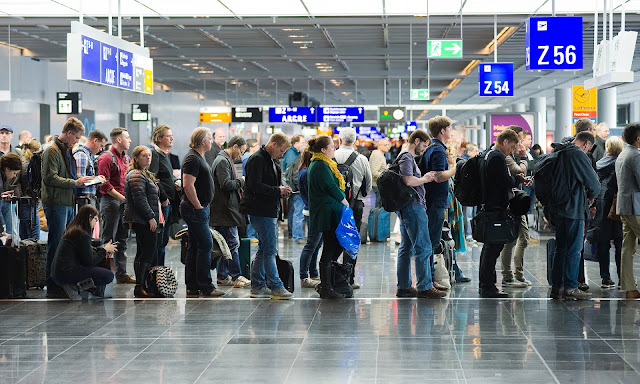





















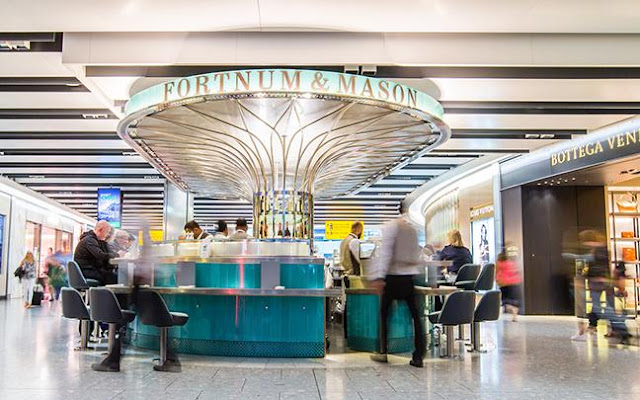









































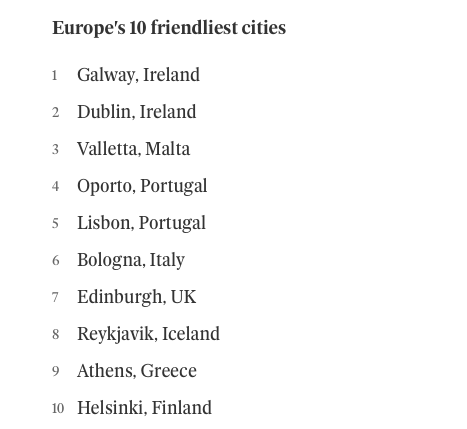











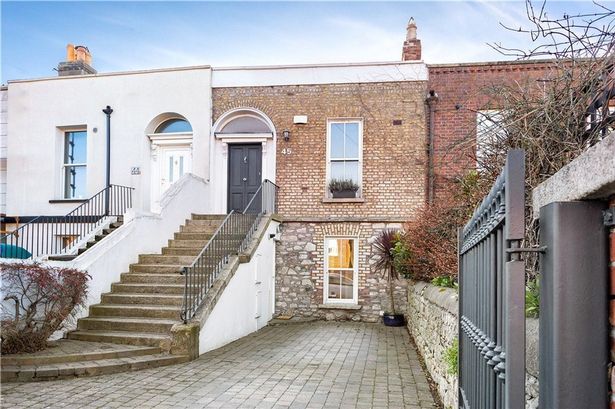



.jpg)






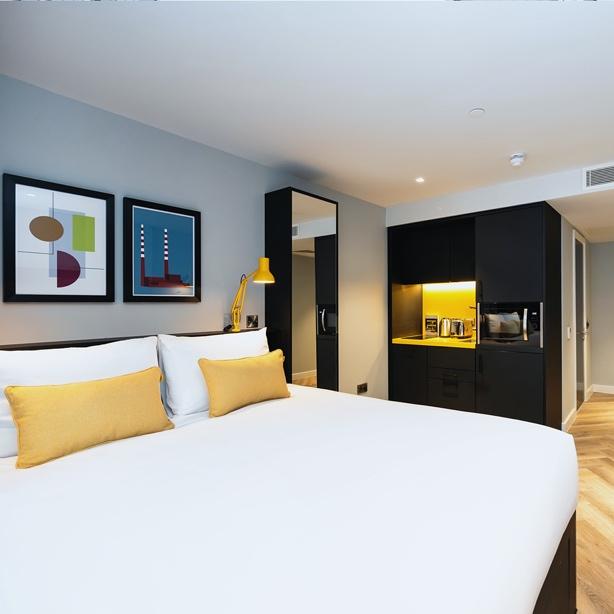

































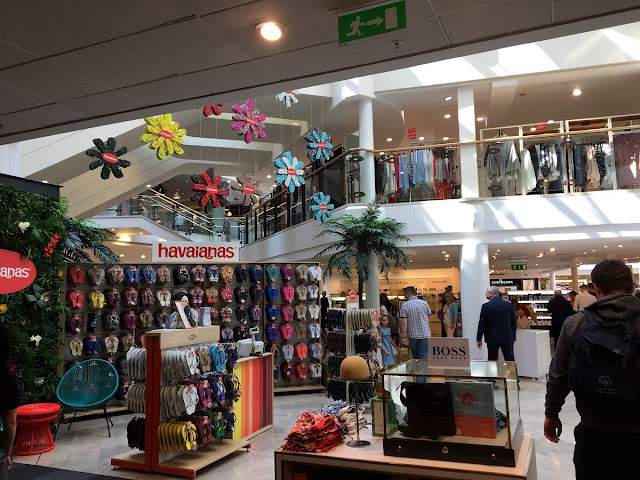





















































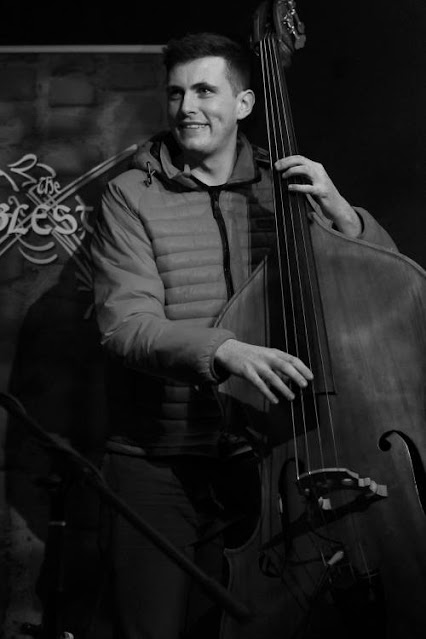











_logo.png)



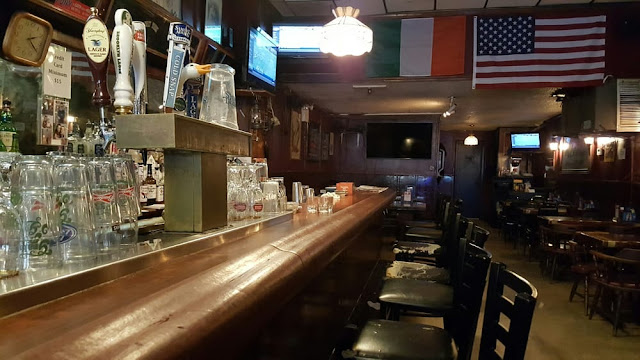
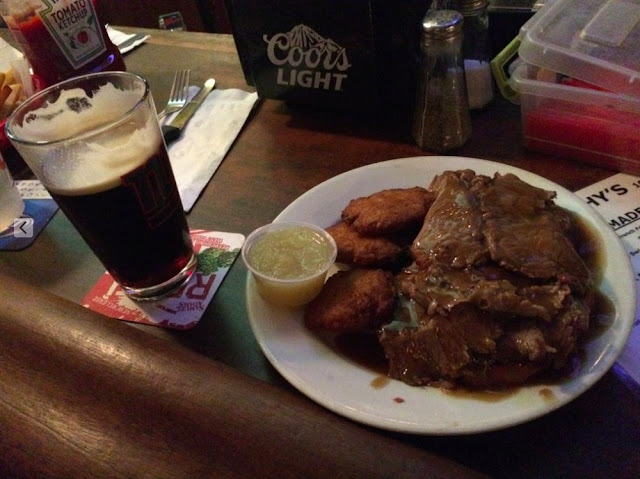




























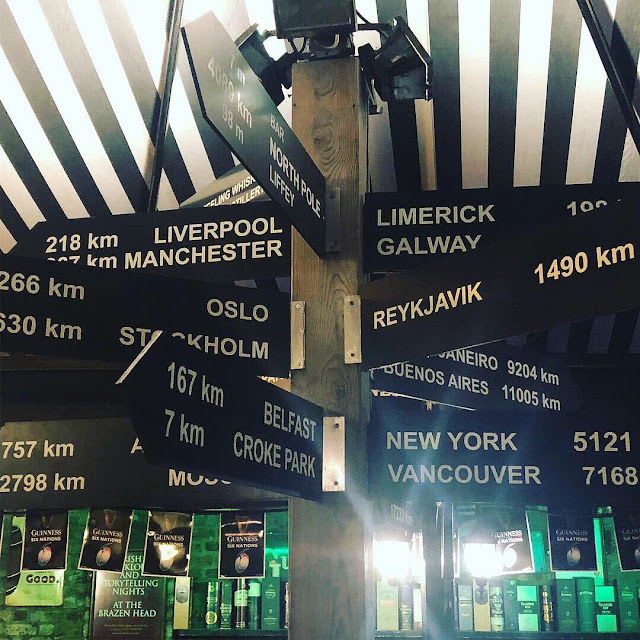


















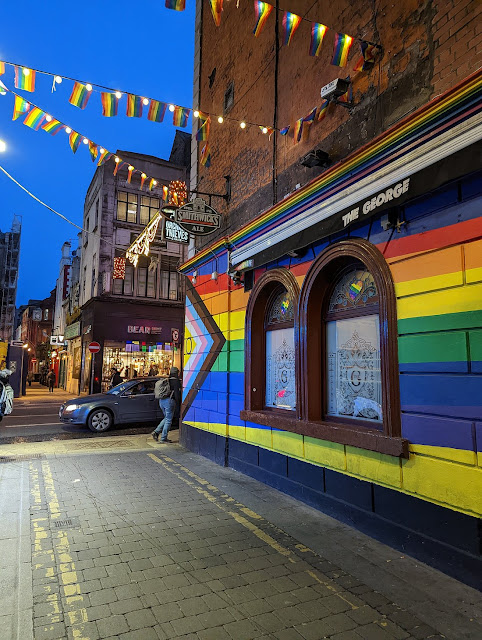
















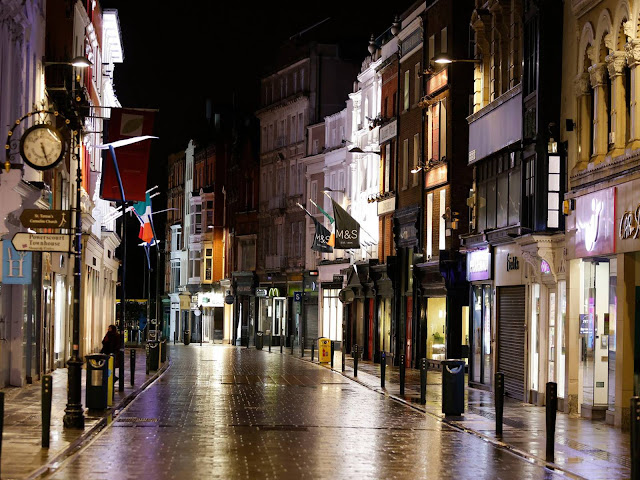
No comments:
Post a Comment
Don't be shy: leave your comments :)